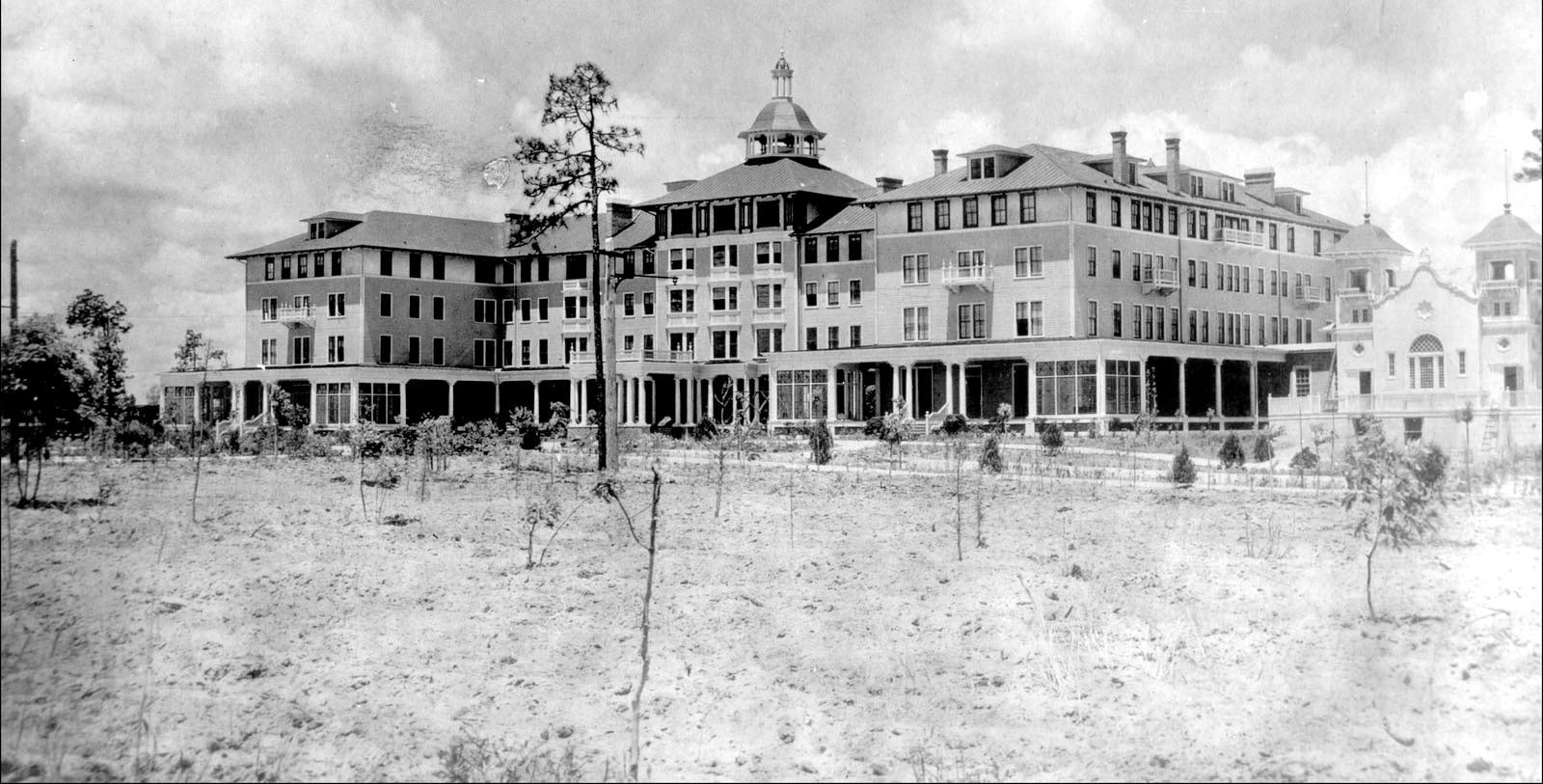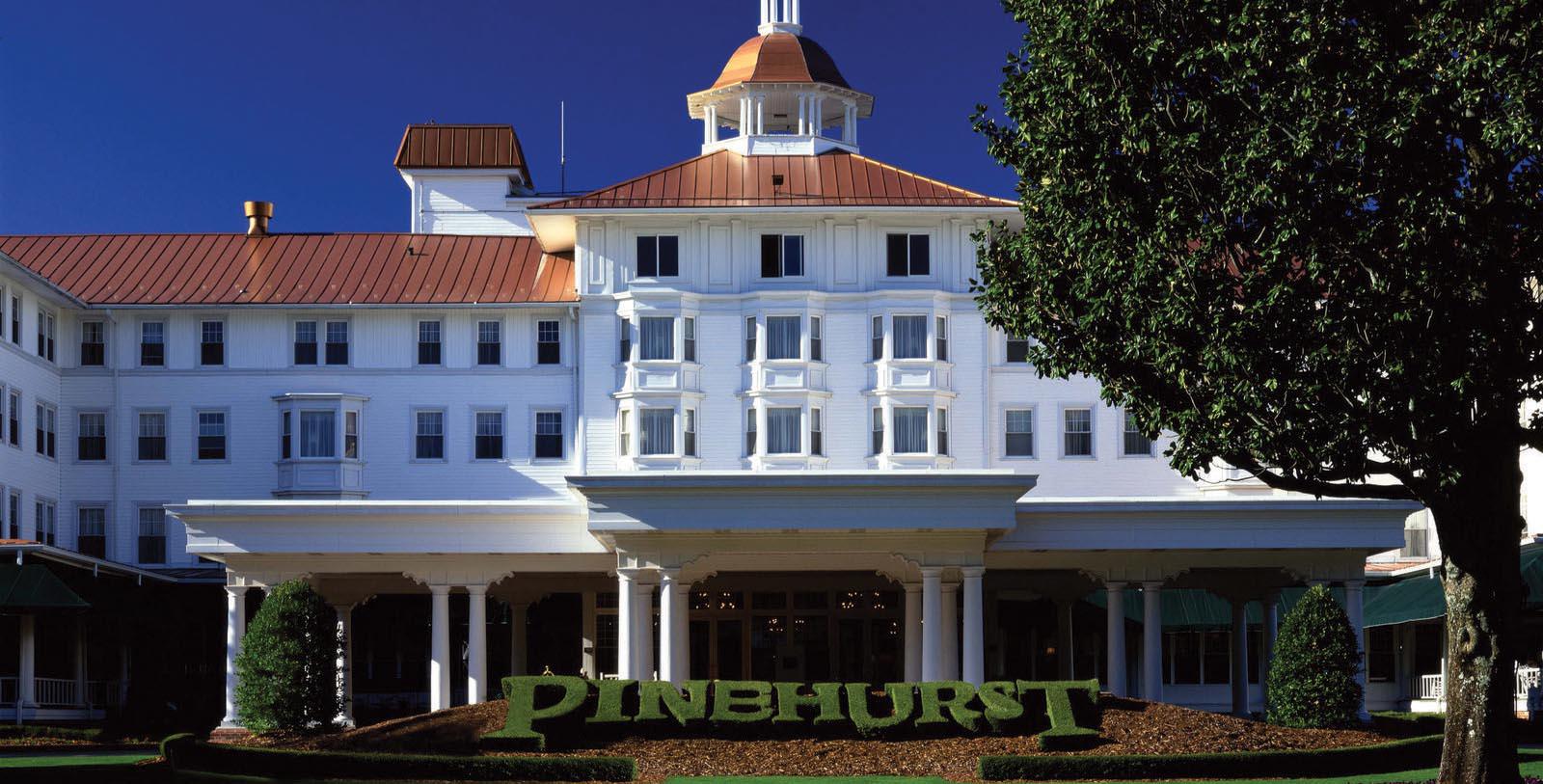Receive for Free - Discover & Explore eNewsletter monthly with advance notice of special offers, packages, and insider savings from 10% - 30% off Best Available Rates at selected hotels.
history
Discover the Pinehurst Resort with wide verandas, afternoon tea, woth meandering bucolic pathways through the quaint New England-style resort village.
Pinehurst Resort, a member of Historic Hotels of America since 1991, dates back to 1895.
VIEW TIMELINE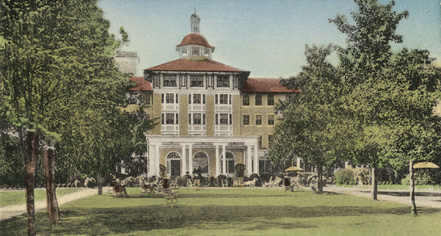
Pinehurst: A History
From its humble beginnings as a pasture in 1895 to one of the premier golf courses in the country, Pinehurst is steeped in history, tradition, and southern hospitality. Join us for this quick history lesson.
WATCH NOWFrom its humble beginnings as a pasture to one of the premier golf courses in the country, Pinehurst Resort – designated a National Historic Landmark District by the U.S. Secretary of the Interior – is steeped in the sport’s history. Historians today celebrate Pinehurst Resort for its role in popularizing the sport of golf throughout the United States during the Gilded Age. Pinehurst’s founder, James Walker Tufts, endeavored to make his fledgling resort the epicenter for American golfers, hiring the renowned Donald Ross to oversee the day-to-day operations of its golfing services. Ross was a Scottish-born immigrant who trained as a young man with the great Old Tom Morris at St. Andrews in the 1890s. He then spent most of his career and life in America, where he designed many of the world’s championship courses amid the “Golden Age of Golf.” Ross specifically built dozens of iconic fairways throughout the country, including Aronimink Golf Club, Seminole Golf Club, and the Oak Hill Country Club. His influence on the game continues to this day.
While Tufts had originally intended for Ross to serve as a manager, the former soda magnate soon assigned him the important task of developing the resort’s fairways. Once settled in at Pinehurst, Ross started developing four of the resort’s championship golf courses, with the first one—Pinehurst No. 1— appearing in 1898. On Pinehurst No. 1, Dr. Leroy Culver originally built the first nine holes (and John Dunn Tucker added the next nine), but it was Donald Ross’s touch that players still feel on the course today. Pinehurst’s most famous course—Pinehurst No. 2— was constructed in 1907. Designed by Ross, it would serve as the site for more championship tournaments than any other golf course in America. Among the many well-known competitions held at Pinehurst No. 2 are the PGA Championship, the Ryder Cup, and the U.S. Open, as well as the now defunct North and South Open Championship. Dozens of famous professional golfers have graced its fairways, including Sam Snead, Ben Hogan, and Jack Nicklaus. (It is the first U.S. Open anchor site and will host championships over the next two decades.)
Ross’ third course, Pinehurst No. 3, opened in 1910. (It was also renovated recently in 2017 as part of a plan to preserve many of Ross’s original design flourishes and characteristics throughout the classic layout.) Pinehurst No. 4 was originally designed by Donald Ross, too, and opened in 1919. It was subsequently restored over the years by Robert Trent Jones Sr., Robert Jones’ son Rees Jones, and Tom Fazio. In 2018, the course opened after a redesign by Gil Hanse, who used the natural topography and native sandscapes to create dramatic vistas and a stunning test of golf. Pinehurst No. 5 was designed in 1961 by Ellis Maples, a protégé of Donald Ross and part of North Carolina’s “First Family” of golf course design. Like Ross, Maples believed that it was the designer’s job to find the golf course that resided in the land’s structure. One of Pinehurst’s most picturesque holes, Number 14, is here. Known as the “Cathedral Hole,” it is fronted by a pond and encircled by a stand of ancient pines, the tops of which resemble the pipes of an organ.
Pinehurst No. 6 was designed by George and Tom Fazio in 1979. Tom and his uncle George, a famed designer who inspired Tom as a young man, began work on No. 6 in 1975. The result was a more rugged, undulating track that demands bigger drives and more aggressive approaches. Pinehurst No. 7 was designed by Rees Jones in 1986. It was built on the site of a nine-hole employee course designed by Donald Ross. Tiger Woods won his lone Pinehurst title here in the 1992 Big I Junior Classic. Pinehurst No. 8 was designed by Tom Fazio in 1995. It opened a year later to commemorate Pinehurst’s centennial. On the Centennial Course, Fazio took full advantage of the 420 acres of rolling terrain and natural wetlands to fashion a course that is visually enthralling and challenging yet fun to play. No. 8 combines classic Donald Ross concepts with the whimsical snarls that have become Tom Fazio’s calling card.
Pinehurst No. 9 was designed by professional golfer and major championship-winner Jack Nicklaus in 1988, and he returned to renovate it in 2005. This 18-hole championship layout highlights classic Nicklaus architecture: wide fairways, lush course conditions and undulating putting surfaces that test players’ minds and abilities. The nine Pinehurst courses feature a total of 144 golf holes and some of the best golf facilities in the world. Along with the nine championship courses, there is The Cradle, a nine-hole short course (designed by Gil Hanse in 2017), and an 18-hole miniature golf course, Thistle Dhu, which opened in 2012. The miniature golf course is an homage to the first mini golf course built in the United States. It was originally designed for a nearby, private Pinehurst home owned by James Barber in the late 1910s. (The new Thistle Dhu is free to resort guests.)
Iconic golfers from around the world have played round after round on the resort’s fairways, such as Harry Vardon, Bobby Jones, Gene Sarazen, Byron Nelson, Sam Snead, Arnold Palmer, Jack Nicklaus, Johnny Miller, Tom Watson, Glenna Collett, Babe Zaharias, Patty Berg, and Louise Suggs. The legendary Ben Hogan started his meteoric ascent into the annals of golfing lore, with his stunning victory at the North and South Open in 1940. In 1951, two teams of British and American professional golfers faced off in one of the most dramatic Ryder Cup Matches to date. Composed of a group that featured Ben Snead, Jimmy Demaret, and Skip Alexander, the American team managed to edge out their British rivals in a dramatic upset that occurred during the final day of matches. The historic greens of Pinehurst No. 2 saw the legendary duel between Payne Stewart and Phil Mickelson during the closing round of the 1999 U.S. Open. The two were neck-and-neck heading into the last two holes of the tournament. Stewart stuck his approach to four feet on 17 for birdie, then holed a dramatic 15-foot putt on the 72nd hole to win the championship, beating Mickelson by one shot.
-
About the Location +
The Village of Pinehurst dates to the height of America’s Gilded Age, when the nation was defined by its great economic prosperity, industrial expansion, and significant social reform. Its story began with John James Walker Tufts, who desired to create an exclusive resort community that would offer a haven for northeastern businesspeople during the winter months. He specifically set about purchasing 6,000 acres in the remote North Caroline Sandhills—a move that many at the time considered to be ill-informed. But Tufts would not be shaken from his conviction as he set about designed the layout for his fledgling town during the early 1890s. To ensure that the community would be nothing short of magnificent, Tufts hired the renowned landscape architect Frederick Law Olmstead to oversee the entire project. Celebrated today as the father of American landscape architecture, Olmstead was known at the time for his prior work on Central Park in New York City. Olmstead’s work on the tiny settlement was an absolute masterpiece. He created the layout for a New England-style village complete with curving, twisting roads that led away from a central village green. Olmstead and his firm also planted more than 225,000 local plants throughout the community in an attempt to create the effect that it resided in a tranquil oasis. Although the settlement was originally called “Tuftstown,” it soon became known as “Pinehurst” across the United States.
Architects from Boston were then summoned to Pinehurst to work on creating the residences and commercial structures within Olmstead’s street grid. The rate of construction for these buildings was incredibly rapid. Close to 40 cottages and boarding homes emerged in the community between 1895 and 1897 alone. Dozens of other significant structures appeared around this time, including the Pinehurst Museum, the Casino and the Village Hall. To the South of the settlement, architects worked closely with Tufts to develop Pinehurst Resort. Soon enough, the southern end of the village became known for its many rolling golf courses. Following Olmstead’s plan, the intent among the architects was to make every single building in the settlement appear as if they had all emerged its dense foliage. Furthermore, they hoped that the structures would better connect their inhabitants to the surrounding landscape. Most of the buildings inside Pinehurst featured an array of architectural styles, with some of the earliest showcasing Queen Anne design aesthetics. As new residents constructed more buildings during the 1910s and 1920s, Colonial Revival-style architecture became the dominant choice in Pinehurst. In all, some 400 unique historic buildings currently reside within village, of which nearly half are cited by the U.S. Department of the Interior to be truly historic. Today, these buildings are recognized by the federal government as being a National Historic Landmark.
-
About the Architecture +
The Holly Inn opened its doors for the very first time amid an exciting New Year’s Eve celebration in 1895. For $3 apiece, guests could gaze upon the hotel’s stunning variety of architectural features and its cutting-edge amenities. The lobby featured an amazing array of pine wood floor paneling, as well as a beautiful mixture of floral motif carvings, stenciled ceilings, and glass fixtures. The original architectural team had hoped that the interior details would better reflect the beauty of Pinehurst’s stunning landscape. The Holly exterior façade featured an eclectic mixture of various architectural styles, including Queen Anne Revival, Art Nouveau, and Arts and Crafts.
Yet, the modest size of The Holly Inn made it difficult to accommodate the growing numbers of visitors that arrived at Pinehurst Resort over the next several years. To that end, James W. Tufts commissioned the construction of The Carolina Hotel. When this magnificent four-story, Colonial Revival-style structure debuted in 1901, it quickly became the resort’s most iconic landmark. The hotel’s stunning cupola and its original yellow and white exterior inspired awe among locals and visitors alike. As such, many throughout the nation took to calling it the “Queen of the South.” Its interior was equally impressive, with all of its 250 guestrooms outfitted with steam heat, electric lighting, and active telephone service. The public spaces were inundated with lavish décor, such as sumptuous velvet carpeting. Tufts even saw that his builders installed only the finest oak paneling inside the writing, smoking, and reception rooms.
Both the Carolina Hotel as well as The Holly Inn were then joined by The Manor Inn many years later in 1990. Originally constructed in 1923 by Emma Bliss, it had originally offered an alternative for vacationers interested in longer stays at the Village of Pinehurst. Her vision for The Manor Inn involved focused on providing an intimate, tranquil experience that was often lost at the larger crowds congregating at the nearby Pinehurst Resort. Pinehurst Resort eventually acquired The Manor Inn some seven decades later as part of a strategy to provide an even greater number of exclusive accommodations. It subsequently underwent a major series of renovations during the 1990s and 2010s, which successfully revitalized the grand historic character of the building.
-
Famous Historic Events +
Historians today often consider the Pinehurst Resort as having played an integral role in popularizing the sport of golf throughout the United States. Legendary golfers from around the world have played round after round on the resort’s fairways, including the likes of Harry Vardon, Bobby Jones, Gene Sarazen, Byron Nelson, Sam Snead, Ben Hogan, Arnold Palmer, Jack Nicklaus, Johnny Miller, Tom Watson, Glenna Collett Vare, Babe Zaharias, Patty Berg, and Louise Suggs. Pinehurst has also hosted numerous professional tournaments, including PGA Championship (1936), the Ryder Cup (1951), the U.S. Amateur Championship (1962, 2008), the U.S. Women’s Amateur Championship (1989), the TOUR Championships (1991, 1992), the U.S. Senior Open (1994), and the U.S. Open Championship (1999, 2005, 2014). Pinehurst Resort even held both the U.S. Open and the U.S. Women’s Open Championship in back-to-back weeks, marking the first time in the sport’s history that the two professional tournaments were played on the same course in the same year. This historic destination will even host the U.S. Open when it returns in 2024.
When Tufts first established his resort during the 1890s, he fully intended for it to be at the forefront of latest innovations within the international golfing community. As such, he hired Scottish-born Donald J. Ross to oversee Pinehurst Resort’s many golfing operations. Responsible for designing some 400 golf courses across North America, Ross held the role as Pinehurst’s leading authority on golf for five decades. While Tufts had originally intended for Ross to serve as a manager, the soda magnate soon assigned him the important task of developing the resort’s fairways. Among the first projects that Ross pursued while at the resort was the development of Pinehurst No. 1 during the late 1890s. Its popularity proved to be so immense among golfers that the United North and South Championships were held at Pinehurst No. 1 in 1901. Ross then began work on another, even greater golf course. Debuting as “Pinehurst No. 2” in 1907, it quickly became the resort’s most beloved fairway. Many historians consider it to be his greatest masterpiece, which he continued to perfect right up until his death during the late 1940s. It is still celebrated today for its immensely challenging greens, in which only the most precise shots guarantee success.
The sport of golf has since witnessed many special moments unfold at Pinehurst Resort throughout its history. The legendary Ben Hogan started his meteoric ascent into the annals of golfing lore, with his stunning victory at the North and South Open in 1940. His triumph that year saw the beginning of a career that would include winning the titles of 9 major golf championships. In 1951, two teams of British and American professional golfers faced off in one of the most dramatic Ryder Cup Matches to date. Composed of a group that featured Ben Snead, Jimmy Demaret, and Skip Alexander, the American team managed to edge out their British rivals in a dramatic upset that occurred during the final day of matches. And more recently, Pinehurst No. 2 saw the legendary duel between Patrick Payne and Phil Mickelson during the closing round of the 1999 U.S. Open. The two were neck-in-neck heading into the last two holes of the tournament. Stewart sunk a putt from four feet out on Pinehurst No. 2’s 17th hole, only for Mickelson to hit the hotel from six feet away. But Stewart finally overcame Mickelson by one stroke on the following hole, in which he made an astounding 15-foot putt.
-
Famous Historic Guests +
John D. Rockefeller, founder of the Standard Oil Company.
John P. Morgan, financier responsible for creating the J.P. Morgan and Co.
Anne Oakley, historic sharpshooter and exhibition shooter popular in Gilded Age America.
Will Rogers, actor known for his roles in such films like Judge Priest, In Old Kentucky, and Steamboat Round the Bend.
Amelia Earhart, pioneering aviator who was the first woman to fly solo across the Atlantic Ocean.
Jack Nicklaus, winner of 18 major golf championships—the most of any professional golfer.
Arnold Palmer, winner of 7 major golf championships that include the PGA Championship and the Masters Tournament.
Sam Snead, winner of 7 major golf championships that include the PGA of America and Senior PGA Tour
Ben Hogan, winner of 9 major golf championships that include his famous “Triple Crown” season.
Francis Ouimet, winner of the U.S. Open in 1913 and regarded as the “father of amateur golf.”
Theodore Roosevelt, 26th President of the United States (1901 – 1908)
Warren G. Harding, 29th President of the United States (1921 – 1923)
-
Women in History +
Annie Oakley: Annie Oakley was a renowned sharpshooter who became a pop-culture icon for her marksmanship during America’s Gilded Age. Oakley originally got her start at the age of 15, when she first began performing alongside her partner and future husband, Frank E. Butler. The couple eventually became fixtures of Buffalo Bill’s Wild West show for a few years, using the platform to become national celebrities. The impact on Buffalo Bill’s Wild West show proved to be significant, as the circus-like pageant quickly endeared itself among American audiences. It even attracted the attention of several prominent international, including Queen Victoria of the United Kingdom, King Umberto I of Italy, and President François Said Carnot of France. While touring with the company, she even supposedly shot the cigarette out of the mouth of Germany’s Kaiser Wilhelm II. Buffalo Bill’s Wild West show made Oakley America’s first popular female celebrity. She wound up making more money than anyone else on Buffalo Bill’s Wild West, save for its founder—William “Buffalo Bill” Cody himself. But Oakley also taught thousands of gun-handling lessons throughout her career to interested individuals. Some of those sessions even included a period of time in which she supervised the Pinehurst Resort’s sporting clay club during the late 1910s. Oakley has since become a renowned cultural figure in modern America. Her likeness has been portrayed in countless movies in the years following her death in 1926, including Tall Tales & Legends, Buffalo Girls, and Hidalgo.
Amelia Earhart: A regular guest at Pinehurst Resort, Amelia Earhart was a legendary aviator who bore the distinction of being the first female to pilot a flight across the Atlantic. Climbing aboard a Fokker Trimotor dubbed “Friendship,” Earhart and her copilot, Wilmer Stultz, began the historic trip from an airfield in Newfoundland in June of 1928. In just under a single day, Earhart and Stultz landed at Pwll in South Wales. She became an overnight international celebrity for her achievement. When Earhart returned to the United States, she was given a massive ticker-tape parade along the Canyon of Heroes in New York City. President Calvin Coolidge even held a reception in her honor at the White House shortly thereafter. Earhart then followed up her grand achievement five years later, when she completed a transatlantic solo flight from Canada to Northern Ireland. Becoming the first woman to finish such a trip alone, Congress bestowed Earhart with the Distinguished Flying Cross. Her fame only continued to grow, as tales of her accomplishments captivated countless Americans. Earhart’s celebrity status even caused her to develop a close friendship with Eleanor Roosevelt during the mid-1930s. When she was not busy flying, Earhart served as a visiting faculty member in aeronautical engineering at Purdue University, and vigorously supported the causes championed by the National Women’s Party. Earhart also founded the Ninety-Nines, an all-female international organization that supports the professional growth of female pilots. Yet, her career was tragically cut short in 1937, when she disappeared while attempting a circumnavigational trek across the globe.
Peggy Kirk Bell: Known as “Peggy,” Margaret Anne Kirk Bell was an American professional golfer who strongly promoted the inclusion of women into professional golf. Bell had always held a fascination with the sport, playing her first rounds of golf at the age of 17. She continued her professional career while a student a Rollins College, where she refined her skills by competing in dozens of amateur tournaments. But people throughout the country started paying attention to Bell when she won the Palm Beach Championship and the Titleholders during the late 1940s. She firmly established herself as one of the leading golfers of her age during her performance at the North & South Women’s Amateur Championship in 1949. Bell successfully managed to beat 64 other players, including Estelle Page and Grace Lenczyk—two of the world’s most talented golfers at that time. She went on to have a distinguished career in the world of professional golf, playing a leading role in founding the Ladies Professional Golf Association. Bell was even elected into World Golf Hall of Fame shortly following her death in 2016. Her wonderful legacy can be felt to this very day through Peggy Kirk Bell Girls Golf Tour. The largest tournament in the nation for young girls, the Peggy Kirk Bell Girls Golf Tour continues Bell’s mission to grant women the opportunity to both learn and excel at the sport of golf.
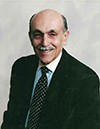
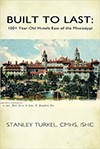
Guest Historian Series
Read Guest Historian SeriesNobody Asked Me, But...
Hotel History: Pinehurst Resort (1895), Pinehurst, North Carolina*
By Stanley Turkel, CMHS
The history of Pinehurst began in 1895, when Bostonian James Walker Tufts, wealthy owner of the American Soda Fountain Company, purchased 5,800 acres of ravaged timberland in the sand- hills of central North Carolina. This land once held a flourishing pine forest that had been cut and deforested for its turpentine and building supplies. Tufts originally developed Pinehurst as a health resort for patients recovering from tuberculosis. After much of the construction had been completed, Tufts learned that tuberculosis was contagious and was forced to turn his new community into a leisure resort instead.
Tufts hired the land planning firm headed by Frederick Law Olmsted, designer of Central Park and Prospect Park in New York and the Biltmore Estate in Asheville, North Carolina. By the end of 1895, Tufts had completed a general store, dairy, boarding house, more than 20 cottages and the Holly Inn. The Pinehurst Hotel opened in 1901 and became the center of such activities as riding, hunting, polo, lawn bowling, archery, bicycling, and tennis.
Golf came to Pinehurst when Dr. D. Leroy Culver designed a rudimentary nine-hole course. In 1899, Pinehurst's first golf professional, John Dunn Tucker, was hired to add an additional nine holes to create Pinehurst's first 18-hole layout. Then, in 1900, Tufts hired Donald J. Ross, a young Scottish golf professional, who remained at Pinehurst until his death in 1948. Ross built a reputation as one of the foremost golf professionals and course architects who ultimately designed more than 400 golf courses throughout the North American continent.
Over the years, many other sports have hosted championships at Pinehurst including the U.S. Tennis Clay Court Championships, the U.S. Croquet Championship and the World Lawn Bowling Championship. Today, Pinehurst is a quintessential resort encompassing three historic hotels, a wealth of recreational activities, and 2,000 beautiful North Carolina acres. Set in one of America's only National Landmark Districts, Pinehurst's wide verandas, walking trails, and bucolic pathways wind through a scenic New England-style village.
In 2002, the new Spa at Pinehurst was one of the first spas in the South to receive the Mobil Four-Star spa designation.
The eight Pinehurst golf courses feature 144 golf holes and some of the best golf facilities in the world. Most of the greatest players have played Pinehurst: Harry Vardon, Bobby Jones, Gene Sarazen, Byron Nelson, Sam Snead, Ben Hogan, Arnold Palmer, Jack Nicklaus, Johnny Miller, Tom Watson, Glenna Collett Vare, Babe Didrickson, Patty Berg, and Louise Suggs. Pinehurst's No. 2 has been the site of the 1936 PGA Championship, the 1951 Ryder Cup Matches, the 1962 and 2008 U.S. Amateur Championships; the 1989 U.S. Women's Amateur Championship, the 1991 and 1992 TOUR Championships, the 1994 U.S. Senior Open, and the 1999 and 2005 U.S. Open Championship.
The Pinehurst Resort is a Four-Star, Four-Diamond full-service destination that includes valet parking, bell staff, concierge, business center, and meeting facilities.
*excerpted from his book Built To Last: 100+ Year-Old Hotels East of the Mississippi
*****
About Stanley Turkel, CMHS
Stanley Turkel is a recognized consultant in the hotel industry. He operates his hotel consulting practice serving as an expert witness in hotel-related cases and providing asset management an and hotel franchising consultation. Prior to forming his hotel consulting firm, Turkel was the Product Line Manager for worldwide Hotel/Motel Operations at the International Telephone & Telegraph Co. overseeing the Sheraton Corporation of America. Before joining IT&T, he was the Resident Manager of the Americana Hotel (1842 Rooms), General Manager of the Drake Hotel (680 Rooms) and General Manager of the Summit Hotel (762 Rooms), all in New York City. He serves as a Friend of the Tisch Center and lectures at the NYU Tisch Center for Hospitality and Tourism. He is certified as a Master Hotel Supplier Emeritus by the Educational Institute of the American Hotel and Lodging Association. He served for eleven years as Chairman of the Board of the Trustees of the City Club of New York and is now the Honorary Chairman.
Stanley Turkel is one of the most widely-published authors in the hospitality field. More than 275 articles on various hotel subjects have been posted in hotel magazines and on the Hotel-Online, Blue MauMau, Hotel News Resource and eTurboNews websites. Two of his hotel books have been promoted, distributed and sold by the American Hotel & Lodging Educational Institute (Great American Hoteliers: Pioneers of the Hotel Industry and Built To Last: 100+ Year-Old Hotels East of the Mississippi). A third hotel book (Built To Last: 100+ Year-Old Hotels in New York) was called "passionate and informative" by the New York Times. Executive Vice President of Historic Hotels of America, Lawrence Horwitz, has even praised one book, Great American Hoteliers Volume 2: Pioneers of the Hotel Industry:
- “If you have ever been in a hotel, as a guest, attended a conference, enjoyed a romantic dinner, celebrated a special occasion, or worked as a hotelier in the front or back of the house, Great American Hoteliers, Volume 2: Pioneers of the Hotel Industry is a must read book. This book is recommended for any business person, entrepreneur, student, or aspiring hotelier. This book is an excellent history book with insights into seventeen of the great innovators and visionaries of the hotel industry and their inspirational stories.”
Turkel was designated as the “2014 Historian of the Year by Historic Hotels of America,” the official program of the National Trust for Historic Preservation. This award is presented to an individual for making a unique contribution in the research and presentation of history and whose work has encouraged a wide discussion, greater understanding and enthusiasm for American History.
Works published by Stanley Turkel include:
- Heroes of the American Reconstruction (2005)
- Great American Hoteliers: Pioneers of the Hotel Industry (2009)
- Built To Last: 100+ Year-Old Hotels in New York (2011)
- Built To Last: 100+ Year-Old Hotels East of the Mississippi (2013)
- Hotel Mavens: Lucius M. Boomer, George C. Boldt and Oscar of the Waldorf (2014)
- Great American Hoteliers Volume 2: Pioneers of the Hotel Industry (2016)
- Built To Last: 100+ Year-Old Hotels West of the Mississippi (2017)
- Hotel Mavens Volume 2: Henry Morrison Flagler, Henry Bradley Plant, Carl Graham Fisher (2018)
- Great American Hotel Architects Volume 1 (2019)
- Hotel Mavens Volume 3: Bob and Larry Tisch, Curt Strand, Ralph Hitz, Cesar Ritz, Raymond Orteig (2020)
Most of these books can be ordered from AuthorHouse—(except Heroes of the American Reconstruction, which can be ordered from McFarland)—by visiting www.stanleyturkel.com, or by clicking on the book’s title.























